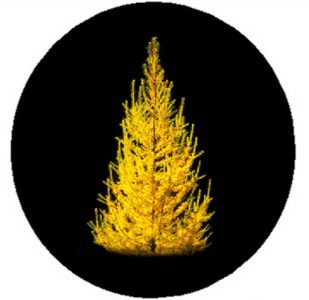
THIS IS A STUDY of the concentration meditation process for intermediate and beginning meditators. If you are interested in meditation, you want to know how to turn your attention inward and what happens when the mind becomes still. Meditation is our tool for liberation. It is a practical, scientific, and systematic technique for knowing yourself on all levels. The highest mystery is to discover the nature of our thinking, to cleanse the mind of coloration and uncover our true nature.
Meditation developed in the caves of the Himalayan Mountains, having a recorded history going back at least 5000 years. The Brihad Aranyaka Upanishad of the 14th century BCE lists sixty-nine generations of meditation teachers and students that had existed up to that point. Gautama Buddha taught around 500 BCE, and Patanjali later codified yoga practices. Since that time, millions of serious men and women, who refuse to be satisfied with dependence upon the words of others, have applied themselves to the art and science of meditation as it spread from the Himalayas throughout the world.1
Most of the concentration meditation practices described here are drawn from the traditions of Raja Yoga and Shamatha in Buddhism. Their similarities allow the meditator to benefit from studying the practices of both traditions. There are primarily three approaches to meditation. Concentration is cultivating one-pointed attention on a meditation object. Open-awareness is opening the mind to the awareness of whatever is happening such as in shikantaza of Zen. Mindfulness and Vipassana are combinations of concentration and open awareness. No matter what approach to meditation is used, the requirements, obstacles and objectives are similar.
This is a “how to do” book with an emphasis on being practical. Many skills in the art and science of meditation need to be developed into a process of quieting and purifying the mind. These practices are designed to help you sit in comfort, breathe smoothly, handle distractions, bring the mind to quietude, establish one-pointedness and meditate. This study of the process of meditation describes the transformation of mind that occurs due to the evolving relationship between the mind and the object of meditation.
If you have some sitting experience, you are familiar with the question “What is going on with my meditation?” It is helpful to have a map to know where you’re going, what the obstacles are and when you are getting off track. I have gathered and used many pointers from Yoga and Buddhist teachers over the years, but you will want to verify which alternatives work for you. Attributions are included to help with your own research.
You may come to meditation by way of a tradition: Yoga, Buddhism, Christian, Hindu, Muslim/Sufi, Sikh, Taoism or Zen. The traditions all started with or have meditation at their beginnings.2 You could go it alone in meditation, but the traditions have thousands of years of accumulated experience for us to use. Whether you are meditating for the transformation of mind, in a search for truth, with enlightenment in mind, or because of its many other benefits, you need all the help you can get. Still, you are basically on your own with this solitary work. There are no shortcuts and those who say meditation is easy are doing something else altogether.
The beginning meditator is usually given a simple set of instructions. Then, when they run into the many obstacles and look for help, little more can be said while most of the literature is written by and for those who are quite advanced. In between the beginners and the adepts are the vast majority of intermediates who need thorough and practical advice in this challenging endeavor. After 40 years of studying many books and articles, spending much time in darshans, seminars, monasteries, retreats and years in ashrams, I found many wonderful pointers about practice. Unfortunately, they were scattered everywhere and often buried under an excess of words. Meditation is a long process measured in decades, which doesn’t give us much time for finding necessary help. The process needs to be shortened. As a student of meditation, my intention is to make the teachings more accessible.
Like many other meditators, my searching started with an attraction to philosophy and the writings from various traditions around the world. Whenever I found writings by those who appeared to be the wisest, there always seemed to be a form of meditation involved. It became clear to me that to be at all serious about my questions, I would need to meditate or I would always be left with hearsay and suppositions. Having grown up in a Christian tradition that did not embrace a meditation option, I took up TM in 1973 but mostly “window-shopped” for the next 15 years. It was 1989 before I came to Raja Yoga to learn meditation with any seriousness. My journal entry at that time read “The Plan: gather pointers on the process of meditation.’” My teacher, a Master Yogi, suggested I “take the best from all the traditions” which suited me well since my personal inclination has long been the study of various processes.
In order that the mind should see light instead of darkness, so the entire soul must be turned away from this changing world, until its eye can learn to contemplate reality and that supreme splendor which we have called the good. Hence there may well be an art whose aim would be to effect this very thing. — Plato, The Republic, Book VII.
